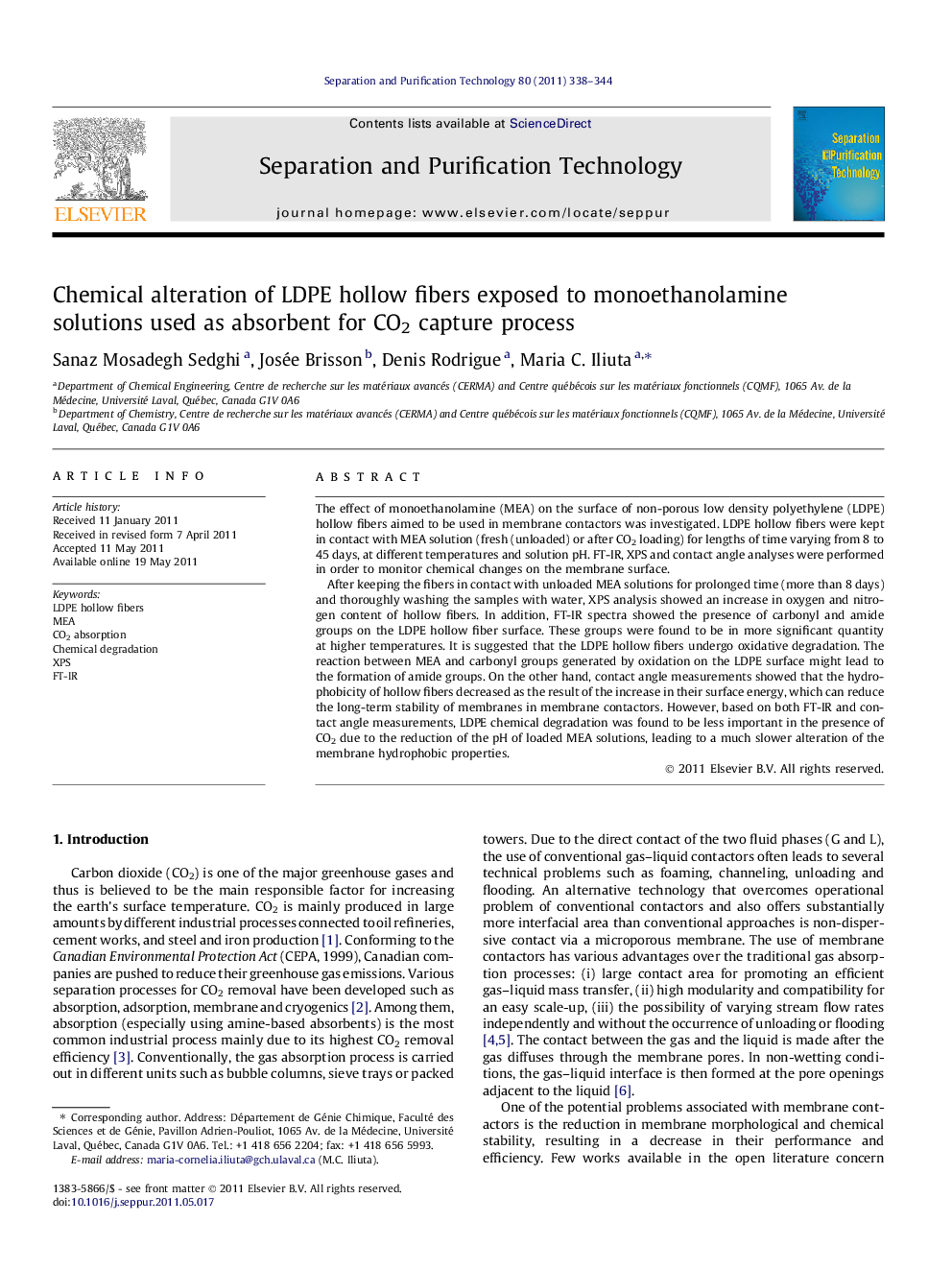| Article ID | Journal | Published Year | Pages | File Type |
|---|---|---|---|---|
| 642609 | Separation and Purification Technology | 2011 | 7 Pages |
The effect of monoethanolamine (MEA) on the surface of non-porous low density polyethylene (LDPE) hollow fibers aimed to be used in membrane contactors was investigated. LDPE hollow fibers were kept in contact with MEA solution (fresh (unloaded) or after CO2 loading) for lengths of time varying from 8 to 45 days, at different temperatures and solution pH. FT-IR, XPS and contact angle analyses were performed in order to monitor chemical changes on the membrane surface.After keeping the fibers in contact with unloaded MEA solutions for prolonged time (more than 8 days) and thoroughly washing the samples with water, XPS analysis showed an increase in oxygen and nitrogen content of hollow fibers. In addition, FT-IR spectra showed the presence of carbonyl and amide groups on the LDPE hollow fiber surface. These groups were found to be in more significant quantity at higher temperatures. It is suggested that the LDPE hollow fibers undergo oxidative degradation. The reaction between MEA and carbonyl groups generated by oxidation on the LDPE surface might lead to the formation of amide groups. On the other hand, contact angle measurements showed that the hydrophobicity of hollow fibers decreased as the result of the increase in their surface energy, which can reduce the long-term stability of membranes in membrane contactors. However, based on both FT-IR and contact angle measurements, LDPE chemical degradation was found to be less important in the presence of CO2 due to the reduction of the pH of loaded MEA solutions, leading to a much slower alteration of the membrane hydrophobic properties.
Graphical abstractFigure optionsDownload full-size imageDownload as PowerPoint slideHighlights► The chemical stability of LDPE hollow fiber membranes upon exposure to MEA aqueous solution (with and without CO2 loading) was studied. ► LDPE hollow fiber samples undergo a two step chemical degradation in the presence of MEA aqueous solutions. ► Chemical alterations were found to be hindered by CO2 absorption.
